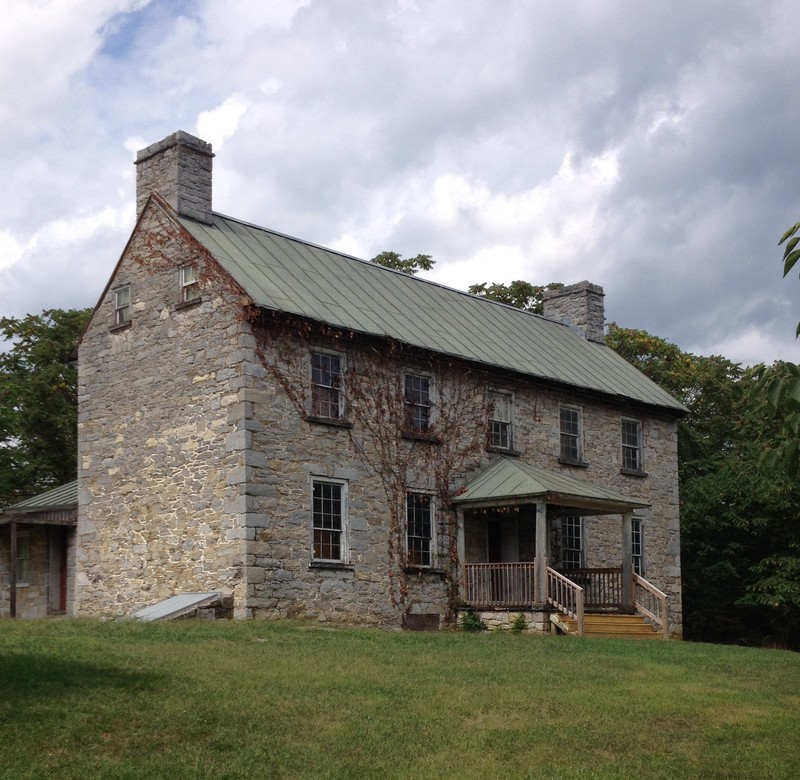Christian Allemong House
Introduction
Text-to-speech Audio
Images
The Christian Allemong House

Backstory and Context
Text-to-speech Audio
The Christian Allemong House was place on the National Register of Historic Places in 2003 for its significance to architecture. Constructed in 1830 (a date stone in the north gable reads Aug 1830) it is an example of Georgian architecture. The house is a two-story, five bay design with a gabled roof laid out in an I-design: one room deep with two rooms separated by a central entry hall. The exterior of the building is constructed of roughly cut limestone that is primarily laid in a random pattern. The exceptions are the quoins (masonry blocks) at the building’s corners, the stone lintels (horizonal supports across the tops of the windows) and window sills, and the keystone designs above the windows. These stone features are all marks of Georgian design. There have been some additions to the house, such as the addition of a modern kitchen and bathroom, and the porch is a 1940s-constructed replica of the original. Most of the interior woodworking is original.
Little is known about the original owner of the home, Christian Allemong. He was a prominent landowner who was born in Germantown, PA on December 6, 1766 and died April 21, 1835 in Clark County, Virginia. The style of the house is likely due to Allemong’s Germantown roots since that style of architecture was popular in that area. The only information known about Allemong comes from will and deed records. His 1833 will stated that the estate should be sold upon his death and $4,000 be placed in an account with interest paid to his wide annually for her support. She was also supposed to receive a bed, bedstead, and bedding. Because the account would not general very much interest at first, the will requested that his executor pay his wife $240 a year. Allemong’s will was unique in that he named his eight slaves and granted them $200 to move to Liberia.
As per the will, the 276+ acre estate was sold on August 20, 1835 to Newton Boley, then to Benjamin Boley in 1837. A portion of the estate (131 acres) with the house was sold to Amos Janey on September 14, 1848. Janey held the property between 1848 and 1868 and after his death the property has gone through several owners.
Sources
"United States Department of the Interior National Park Service National Register of Historic Places Registration Form: Allemong, Christian, House." Accessed September 28, 2020. http://www.wvculture.org/shpo/nr/pdf/jefferson/03000346.pdf.
"Christian Allemong House." Wikipedia. Accessed September 28, 2020. https://en.wikipedia.org/wiki/Christian_Allemong_House.
